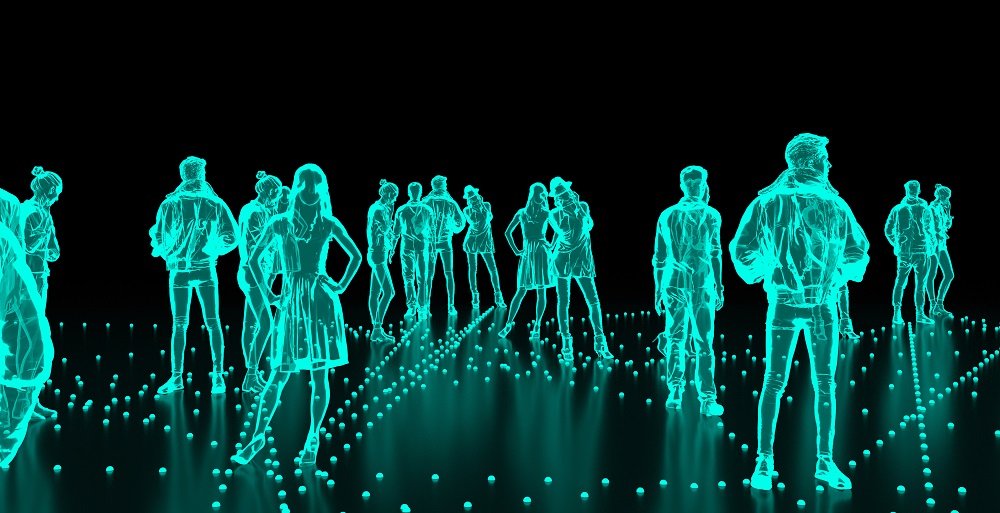Is everything just virtual? In science fiction works like “The Matrix” or “Simulacron” we all live in simulations. Researchers have now investigated whether this is technically feasible and likely. The result is that the effort to emulate the multitude of intelligent beings and their intellectual performance and environment would be gigantic even for a highly advanced civilization – and the result would be impeccable.
How realistic is our world, the universe and everything in it? Is our universe just a hologram – a projection of 2D fields and parameters? Or perhaps we are living in a computer simulation of a cognitive and technically superior civilization? People have been debating this question for centuries, and there are countless variations on this scenario in science fiction as well.
Philosopher Nick Bostrom considers it almost inevitable that an advanced civilization will create simulated worlds – unless it self-destructs before it reaches the necessary technological capabilities. At an annual conference, SpaceX founder Elon Musk put the chance that we are real at only one billion.
What is the probability of simulating the universe?
Alexander Pippo-Delisle and Jill Brasard of the University of Montreal took a new probability estimate. Unlike previous methods, in their mathematical model, they also investigated the possibility of simulating thinking processes and interactions with the environment using quantum computers and quantum processes.
“Like many things in computer science, the idea that our world could be a simulation needs to be reconsidered in light of developments in quantum computing,” the researchers say. “The desire to reproduce all of our physics using classic resources alone hardly seems possible.” They also check how much energy will be needed and whether simulated beings can also perform simulations on their side.
The first condition: simulating smart objects
The first important question will be how much computing power is required to single-handedly simulate the performance of the human brain. The computing power of a brain weighing about 1.4 kg ranges from 1014 And 1014 Researchers explain. In theory, assuming appropriate technologies, up to 10 computing capabilities50 Operations in seconds and kilograms.
If a civilization had advanced enough to convert at least a billionth of the energy stored in matter into computing power, then with a brain-sized computer, they could develop 1.4 times 1025 Simulate virtual brains, the scientists explained.
The second requirement: interactions and laws of nature
But virtual brains alone are not sufficient: the simulation must also record all interactions of the simulated organisms with their environment as well as all the processes that result from simulating the laws of nature. Bibeau-Delisle and Brassard wrote: “If you just want to create worlds in which intelligent beings live and interact in it, it would be beneficial to choose natural laws that allow for intelligence while minimizing the costs of simulating the environment.”
If a civilization wanted to create a virtual world whose physical laws match those in reality, the effort would be much greater: “It would take a long time to simulate this environment down to the smallest microscopic level,” the researchers explain. According to their calculations, the computing power for this would be so high that even the maximum computing intensity would not suffice to simulate a large number of individuals down to these details.
Nevertheless, it can be envisioned that simulations adapt to complexity in a variable way: if people are currently conducting experiments that require a high level of detail, for example in quantum physics tests or astronomical explorations, then the ‘accuracy’ increases. If our attention is not focused on such complex processes, the level of detail can be reduced.
The recursive simulation problem
There is another factor that could greatly increase the computational effort to simulate the world: if the simulated objects, in turn, began to use computers and perform their simulations. Then, the real-level computers not only have to maintain their first-level simulations, but also their simulations – etc. This iterative simulation will allow the necessary computing capabilities to increase exponentially.
“It becomes all the more dramatic when a simulated civilization uses large amounts of computing power for various other purposes – in addition to its simulations,” explains Bibeau-Delisle and Brassard. At that time, the computational power of a real civilization was no longer sufficient to simulate large numbers in virtual individuals.
“In the absence of additional evidence, the number of simulated organisms is thus a good indication of the likelihood that we will live in a simulation,” the researchers said.
‘The likelihood is well below 50 percent’
Similar to the famous Drake equation, in which one can calculate the probability of extraterrestrial civilizations, all of these factors can also be combined to simulate the world. With this account, Bibeau-Delisle and Brassard come to the conclusion: The chance of living in a purely virtual world is rather small and is in any case well below 50 percent.
The scholars wrote: “The main factors of this low probability are the tremendous effort to convincingly simulate the environment of civilization, the inevitably incomplete efficacy of each computer operation, and the fact that simulations can be repetitive.”
The missing aliens are suspects
However, there is one factor that could suggest that we are living in a simulation: the fact that we have yet to discover any extraterrestrial life or its investigations. “If we lived in simulations with simplified physics, we would never encounter such sensors,” said Pippo Delisle and Brasard. Because such simulations will save the effort to create other creatures far from the simulated Earth.
The researchers say: “The fact that we have not yet discovered any evidence of extraterrestrial civilizations may be considered the most convincing argument for simulation theory.” (Proceedings of the Royal Society A: Mathematical and Physical Sciences, 2021; Doi: 10.1098 / rspa.2020.0658)
What: The Royal Society

“Certified gamer. Problem solver. Internet enthusiast. Twitter scholar. Infuriatingly humble alcohol geek. Tv guru.”





